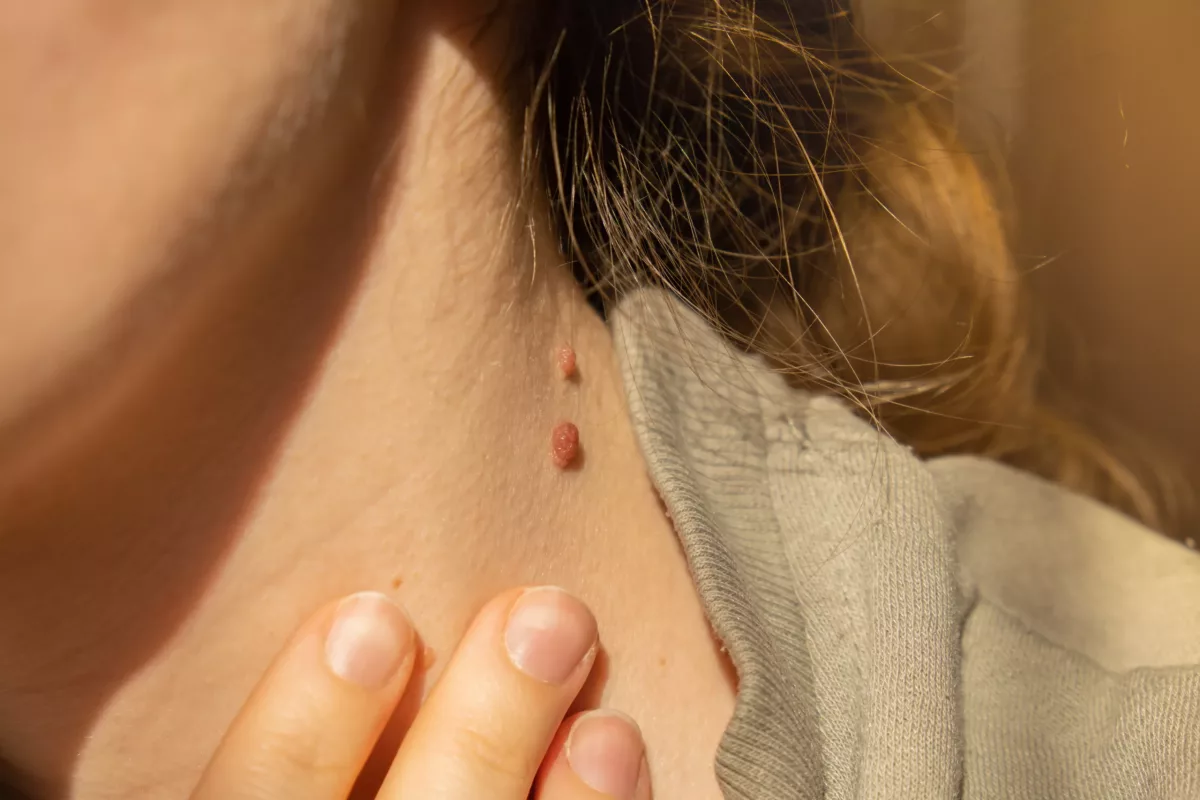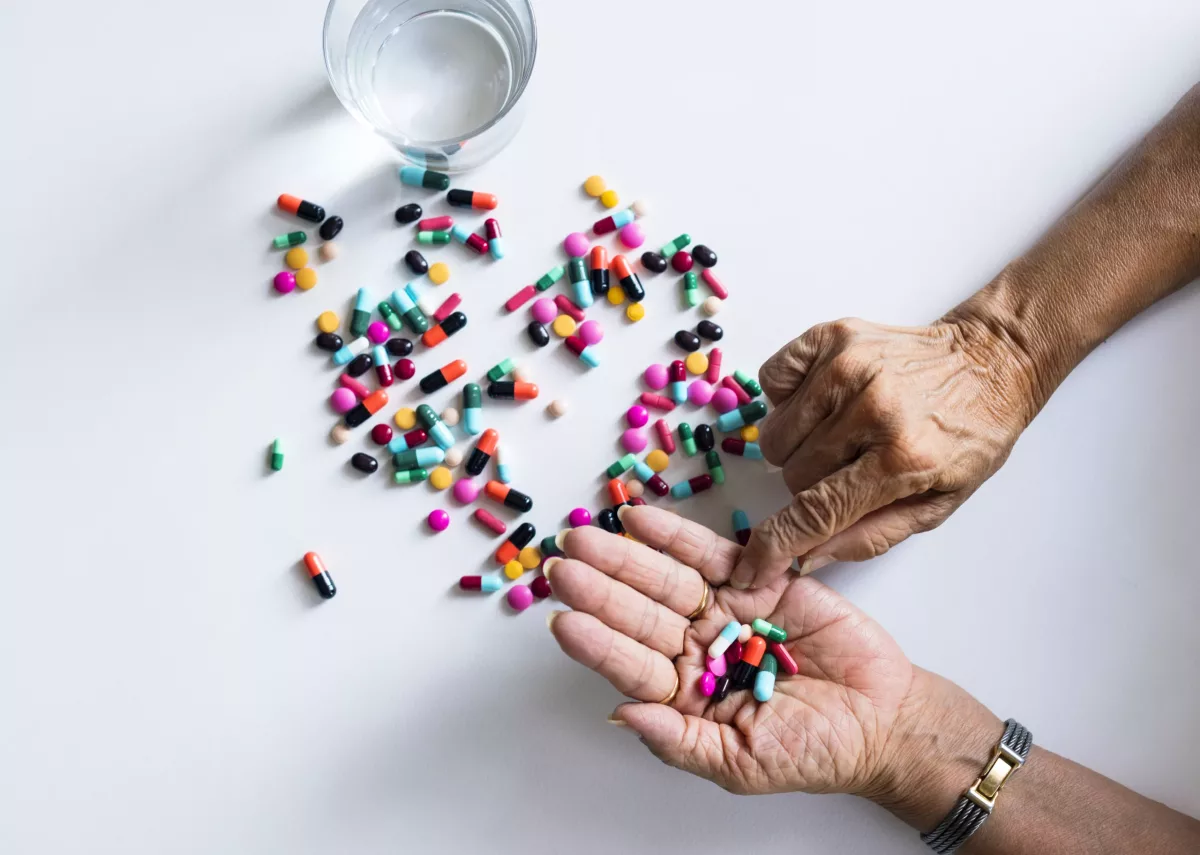Some people may develop certain growths on the skin due to human papillomavirus (HPV). These growths are called warts. Doctors categorize this condition into plantar warts, common warts, and flat warts. Fortunately, there are multiple treatments that help get rid of them.
Generally, warts are considered noncancerous (benign) growths that develop on the skin with mucosa (similar to inside the mouth). While there are more than 100 subtypes of HPV, only several of them can cause warts on the skin.
These benign growths on the skin are considered harmless, but sometimes can be bothersome or even painful in some people.
Types
Physicians have classified these growths according to their appearance. Check below some examples:
- Common warts (also known as Verruca Vulgaris) – This type often appears on the hands and causes rough bumps and black dots similar to seeds. These black dots are smothered and dead capillaries that range in size from a pinhead to a pea. Usually, people who get types 2 and 4 develop common warts. However, types 1, 3, 7, 27, 29, and 57 also cause this type of warts in some people.
- Plantar warts – This type often appears on the feet (including the soles of the feet). Usually, plantar warts grow inward and may also have black dots. Some warts on the soles of the feet may become large and cause pain, especially when you stand or walk. This type of wart often occurs in people with the following subtypes of HPV. These include 1, 2, 4, 27, and 57.
- Mosaic warts – This type of warts causes white growths on the skin that are approximately the size of a pinhead. Usually, they appear on the balls of the feet and under the toes. However, mosaic warts can spread to a large area of the foot. In general, these warts are flatter compared to plantar warts and rarely cause pain during movement. Most people diagnosed with mosaic warts have type 2 HPV.
- Flat warts – In such cases, growths may develop anywhere on the body. They are smoother and smaller but may appear in large amounts compared to other types of warts. For instance, these growths may develop from 20 to 100 at a time. Usually, people with the following subtypes of HPV develop flat warts. For example, 3, 10, and 28.
- Filiform warts – This type often grows on the face and around the mouth, nose, or eyes. They look similar to long threads that frequently stick out. Filiform warts commonly develop in people with the following subtypes of HPV. These include 1, 2, 4, 27, and 29.
- Genital warts – People affected by this type of warts usually have growths on the genitals and rectum (also called anal warts). It is considered a sexually transmitted disease (STD) that often spreads from one person to another through direct contact (skin-to-skin). In most cases, genital warts are small with rough surfaces. Approximately 90% of diagnosed genital warts occur due to HPV types 6 and 11.
- Butcher’s warts – Those who develop this type usually experience warts on their hands. This type tends to occur in people who handle raw meat (such as butchers) and people who are frequently exposed to cold or moist environments. In most cases, those who develop butcher’s warts have HPV type 7.
- Heck’s disease (focal epithelial hyperplasia) – This type of warts develops quite rarely and it affects the lining inside the mouth (mucosa). In most cases, these warts are soft and white. The risk of developing Heck’s disease increases if you have HPV types 13 and 32.
Some people with warts may experience low self-esteem and walking problems because some of them cause pain.
How Common Are Warts?
This condition occurs quite commonly, and it affects approximately 10% of people in the entire world. Furthermore, children and people with weakened immune systems are more likely to develop warts.
What do Warts Look Like?
These benign growths often appear differently. It depends on the type you develop. They may look:
- Flat
- Rough
- Dome-shaped
- Smooth
- Thread or finger-like
- Skin-colored (such as brown, gray, or black)
- Some of them may have small black or brownish dots
- Bumpy
Commonly, warts range in size from 1 millimeter to a few centimeters. Sometimes, people may develop multiple warts in the same area. In most cases, people identify warts on their own. If you are unsure whether it is a wart, you should see a doctor.
Causes
This condition appears due to certain strains of human papillomavirus. Usually, the virus enters the body through small cuts or cracks in the skin. When the virus enters the body, it begins to cause extra cell growth, which makes the outer layer of the skin thicker and harder. As a result, warts develop.
While all warts appear due to HPV, not all types of HPV cause warts. In addition, there are some types of human papillomavirus that may increase the risk of cancer (such as cervical cancer), but it does not cause warts.
Moreover, warts are contagious because this virus may spread to other people through direct or indirect contact. For instance, the virus that causes warts may spread to other people through direct skin-to-skin contact or indirectly by using the towels or razors of infected people.
What Are The Possible Complications of Warts?
When warts do not go away on their own, it may lead to some complications. Check below some examples:
- Infections – An infection may occur if you pick or cut a wart. Therefore, doctors may recommend antibiotics to treat this condition.
- Pain – Usually, warts do not hurt, but plantar warts may grow inward in the foot and cause pain, especially while walking.
- Mental health problems – Some people may feel ashamed or embarrassed about having warts, which may negatively affect their self-esteem and mental health. Discuss with your healthcare professional if you have concerns about warts.
How to Prevent Warts?
In general, there are no sure ways to prevent warts. However, the following tips may help reduce the risk of getting the virus that causes them. Examples include:
- Avoid touching the warts of another person
- Do not share washcloths, clothing, nail clippers, razors, or towels with other people
- Do not bite your nails or pick at your cuticles
- Try to keep your skin moisturized because it prevents dryness or cracks on the skin
Check below for additional tips that help prevent the spread of the virus:
- Regularly wash your hands with warm water and soap
- Keep the feet dry to prevent the spread of plantar warts
- Avoid scratching or cutting warts
Diagnosis
Usually, healthcare professionals diagnose warts by performing a physical examination only. If it is not clear, doctors may perform a skin biopsy to confirm the condition or exclude other conditions that cause similar symptoms.
Treatment
Commonly, warts disappear on their own, but this is a long process that may last up to 2 years. Healthcare professionals recommend lifestyle changes and certain treatments to prevent the spread of warts to other people. Check below for some examples:
- Over-the-counter (OTC) products – These include products that contain Salicylic acid. Such medicines usually come in gel and patch form. In most cases, doctors recommend applying these medications daily for a few months until the warts disappear completely.
- Topical treatments – In such cases, you should apply a liquid mixture that contains Cantharidin to warts. This medicine helps cut off the blood supply to the wart. Thereafter, you should see a doctor to remove the dead wart.
- Medical freezing – This procedure is also known as cryotherapy, and it involves liquid nitrogen to freeze warts. Usually, people who choose this treatment need to use it several times to notice improvements.
Some people do not notice improvements with previous treatments. In such cases, doctors prescribe additional ones. Check below some of them:
- Immunotherapy – This treatment involves specific medicines that boost the immune system to fight against the virus.
- Surgical removal – Doctors may remove the wart, but this treatment may leave a scar.
- Electrosurgery – This treatment uses a specific heated needle that burns warts. However, this treatment may also leave scars.
- Laser treatment – This treatment is often recommended to destroy small blood vessels in the wart, which helps interrupt the blood supply.
Home Remedies
There are some options that may help get rid of warts at home. One of them is covering the wart with duct tape and OTC medicines. Do not try to cut or rip a wart at home because it may lead to unpleasant results (such as infections).
Frequently Asked Questions
Can warts go away on their own?
Yes, approximately 65% of all warts disappear on their own without treatment. However, this is a long process that may last up to 2 years. However, people who have a weakened immune system cannot get rid of warts without treatment.
When should I see my healthcare provider about warts?
Do not hesitate to see a doctor if any of the following cases occur. For example:
- Over-the-counter medicines do not work
- Growths on the skin look suspicious
- You develop multiple warts
- A wart develops on the face, genitals, rectum, or in the mouth
- Weakened immune system
- You experience chronic health conditions (such as diabetes)
How contagious is a wart?
These noncancerous growths are very contagious and can spread from one person to another and from one part of the body to another. Warts appear due to human papillomavirus. However, not all types of this virus cause warts. Ask your healthcare provider if you have additional questions.




